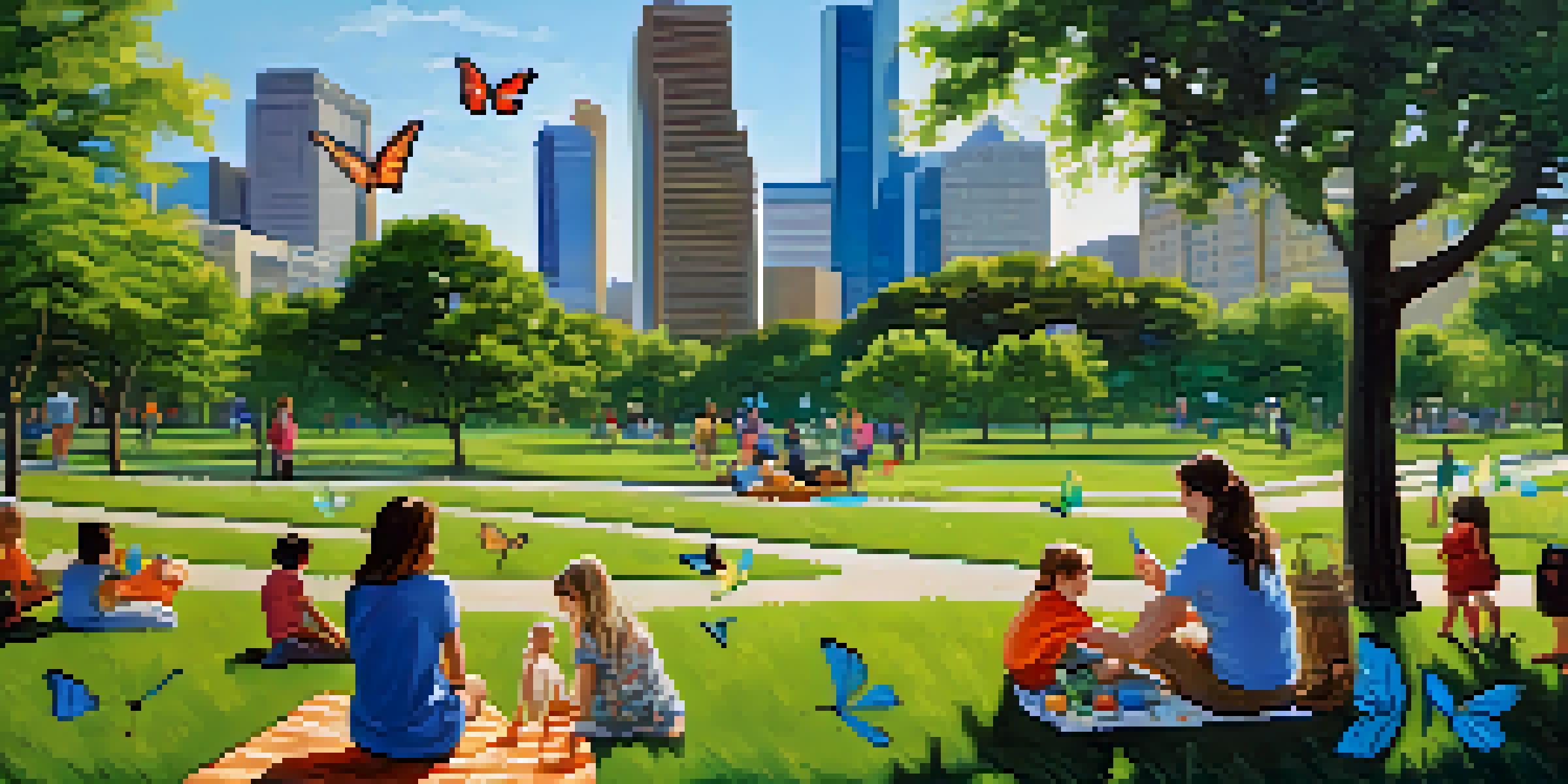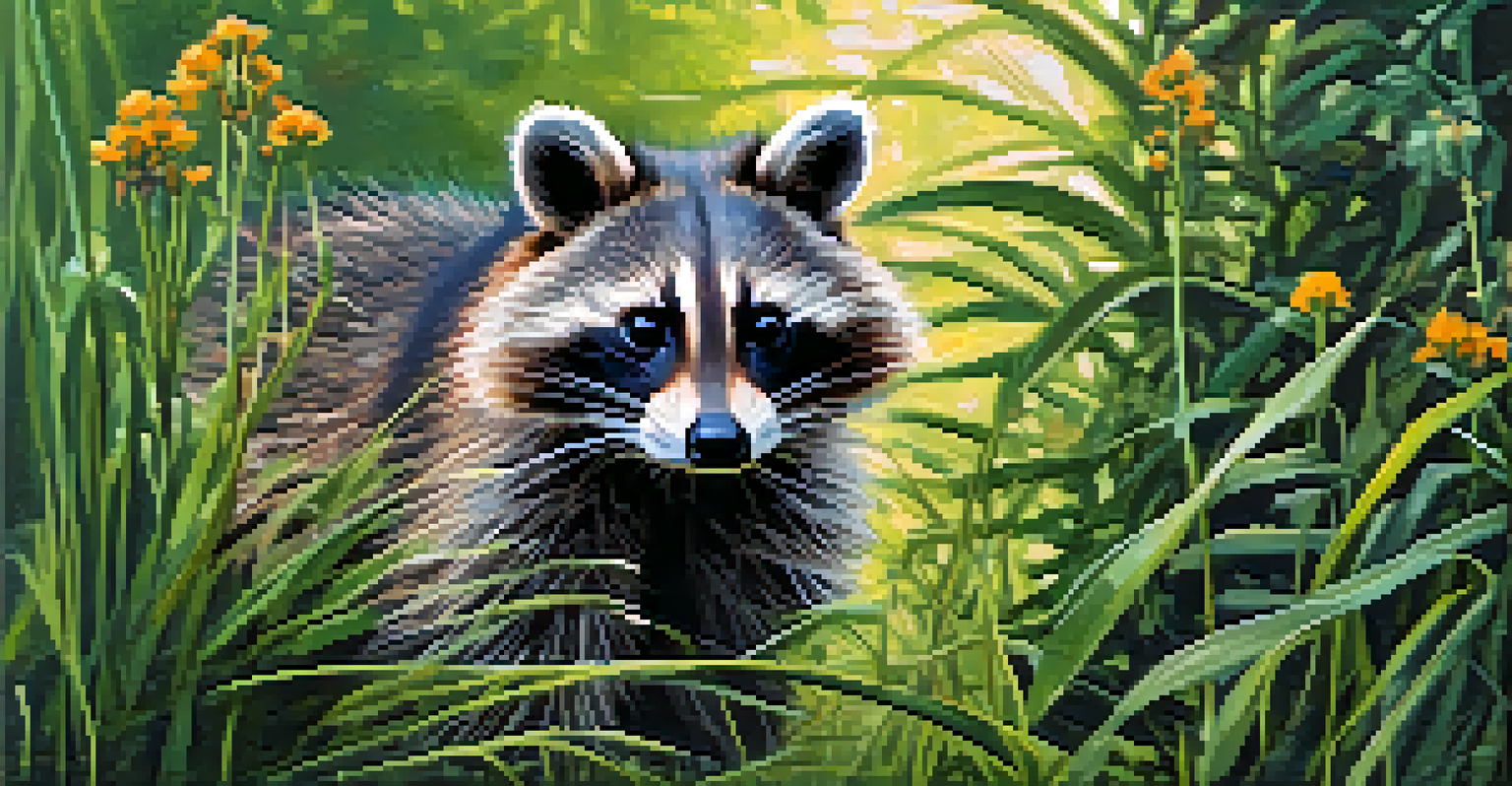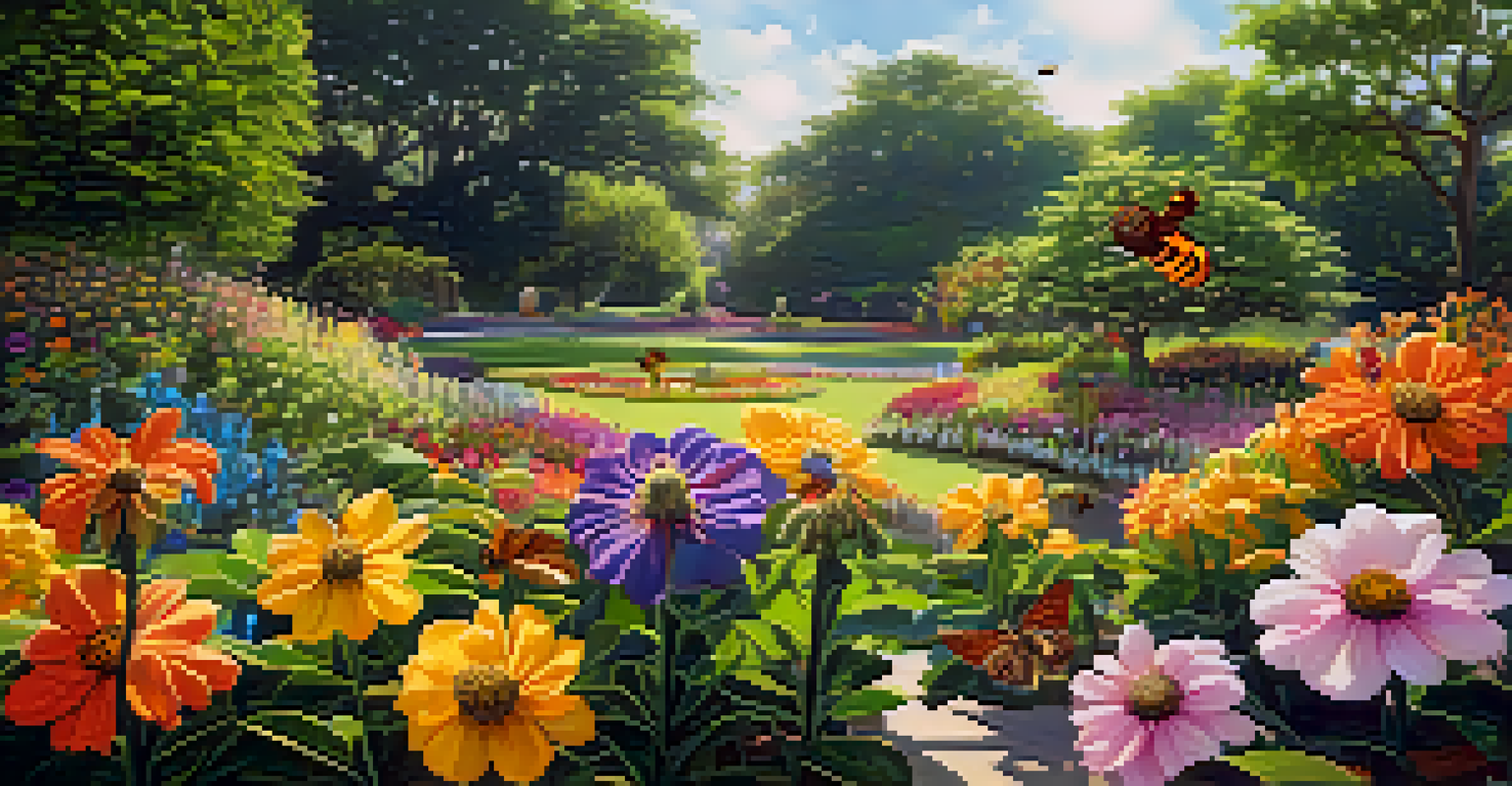The Importance of Green Spaces for Urban Wildlife in Houston

Understanding Urban Wildlife in Houston's Ecosystem
Urban wildlife refers to the diverse animals that inhabit cities, adapting to urban environments. In Houston, this includes everything from squirrels and birds to more elusive species like raccoons and foxes. These animals play a crucial role in maintaining the ecological balance, contributing to pest control and pollination.
In every walk with nature one receives far more than he seeks.
As cities expand, wildlife faces numerous challenges, such as habitat loss and pollution. However, Houston's unique blend of urban and natural landscapes offers a glimmer of hope for these species. By understanding the dynamics of urban wildlife, we can appreciate the importance of their presence in our daily lives.
Moreover, recognizing urban wildlife helps foster a sense of connection between residents and the natural world. This connection is vital not only for conservation efforts but also for enhancing the overall quality of life in the city.
The Role of Green Spaces in Urban Environments
Green spaces, including parks, gardens, and green roofs, provide essential habitats for urban wildlife. These areas serve as refuge spots where animals can find food, shelter, and breeding grounds amidst the concrete jungle. In Houston, local parks like Hermann Park and Buffalo Bayou Park offer critical green corridors for wildlife.

Additionally, green spaces help to mitigate the urban heat island effect, making cities more comfortable for both humans and wildlife alike. They improve air quality, reduce noise pollution, and provide recreational opportunities for residents. Essentially, these green areas act as lifelines for urban wildlife, facilitating their survival and adaptation.
Urban Wildlife Enhances Ecosystem
Urban wildlife in Houston plays a vital role in maintaining ecological balance by supporting pest control and pollination.
The presence of green spaces also encourages biodiversity, allowing various species to thrive in close proximity. This diversity is crucial, as it enhances the resilience of the ecosystem against diseases and environmental changes.
Benefits of Green Spaces for Urban Wildlife
Green spaces provide numerous benefits to urban wildlife, including food sources and safe nesting areas. Trees, shrubs, and flowering plants attract birds, bees, and butterflies, creating a vibrant ecosystem. For example, native plants in Houston gardens can support local pollinators, which are essential for food production.
The greatness of a nation and its moral progress can be judged by the way its animals are treated.
Moreover, these spaces offer a sanctuary from urban stressors such as traffic and noise. By providing a refuge, green areas allow wildlife to reproduce and thrive despite the surrounding urbanization. This is particularly important for species that are becoming increasingly rare in urban settings.
Ultimately, the health of urban wildlife is closely linked to the health of our green spaces. The more we nurture these areas, the more diverse and resilient our urban wildlife populations will be.
Challenges Facing Green Spaces in Houston
Despite their importance, green spaces in Houston face several challenges, including development pressures and maintenance issues. As the city grows, many parks and natural areas are at risk of being replaced with new buildings and infrastructure. This loss not only affects wildlife habitats but also diminishes the quality of life for residents.
Additionally, not all green spaces are created equal. Some may lack the biodiversity needed to support a variety of wildlife species. Poorly maintained parks can also deter wildlife, as they may not provide the necessary food or shelter.
Green Spaces Are Essential Habitats
Green spaces in Houston provide crucial habitats for urban wildlife, offering food, shelter, and breeding grounds amidst urban development.
To combat these challenges, it's essential for communities to advocate for the preservation and enhancement of existing green spaces. Engaging with local governments and organizations can help ensure that these precious habitats are protected for future generations.
Community Involvement in Green Space Protection
Community involvement is vital for the protection and enhancement of green spaces in Houston. Local residents can participate in clean-up events, tree planting initiatives, and wildlife monitoring programs, fostering a sense of ownership and stewardship. When people care for their environment, it leads to healthier ecosystems and wildlife.
Education plays a crucial role in this involvement. By raising awareness about the benefits of green spaces for urban wildlife, communities can inspire action and advocacy. Workshops and outreach programs can help residents understand how they can contribute to preserving these vital areas.
Furthermore, collaborating with local organizations can amplify these efforts. Partnerships can provide resources and expertise to create more sustainable green spaces that better support urban wildlife.
The Impact of Climate Change on Urban Wildlife
Climate change poses significant challenges for urban wildlife and their habitats. Rising temperatures, unpredictable weather patterns, and habitat loss can disrupt the delicate balance of ecosystems. In Houston, these changes can impact the availability of food and nesting sites for local wildlife.
Green spaces can help mitigate some of the effects of climate change by providing cooler areas and improving air quality. However, they must be managed with an understanding of how climate change affects local species. For instance, planting native species that are more resilient to climate shifts can enhance the adaptability of urban wildlife.
Community Action Protects Green Areas
Community involvement is key to preserving and enhancing green spaces, fostering a sense of stewardship and promoting biodiversity.
Moreover, addressing climate change on a broader scale requires collective action from communities and policymakers. By prioritizing green infrastructure and sustainable practices, we can create a more resilient urban environment for wildlife.
Conclusion: The Future of Urban Wildlife in Houston
The future of urban wildlife in Houston largely depends on the commitment to preserving and enhancing green spaces. By recognizing their importance, communities can work together to create a more sustainable environment that benefits both people and wildlife. This collaboration can lead to thriving ecosystems that enrich our urban landscapes.
As we move forward, it’s crucial to advocate for policies that protect green spaces and promote biodiversity. Engaging with local leaders and participating in conservation efforts can ensure that Houston remains a welcoming habitat for its diverse wildlife.

Ultimately, the health of urban wildlife reflects the health of our communities. By investing in green spaces, we invest in a brighter, more sustainable future for both Houston's residents and its wildlife.